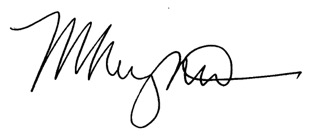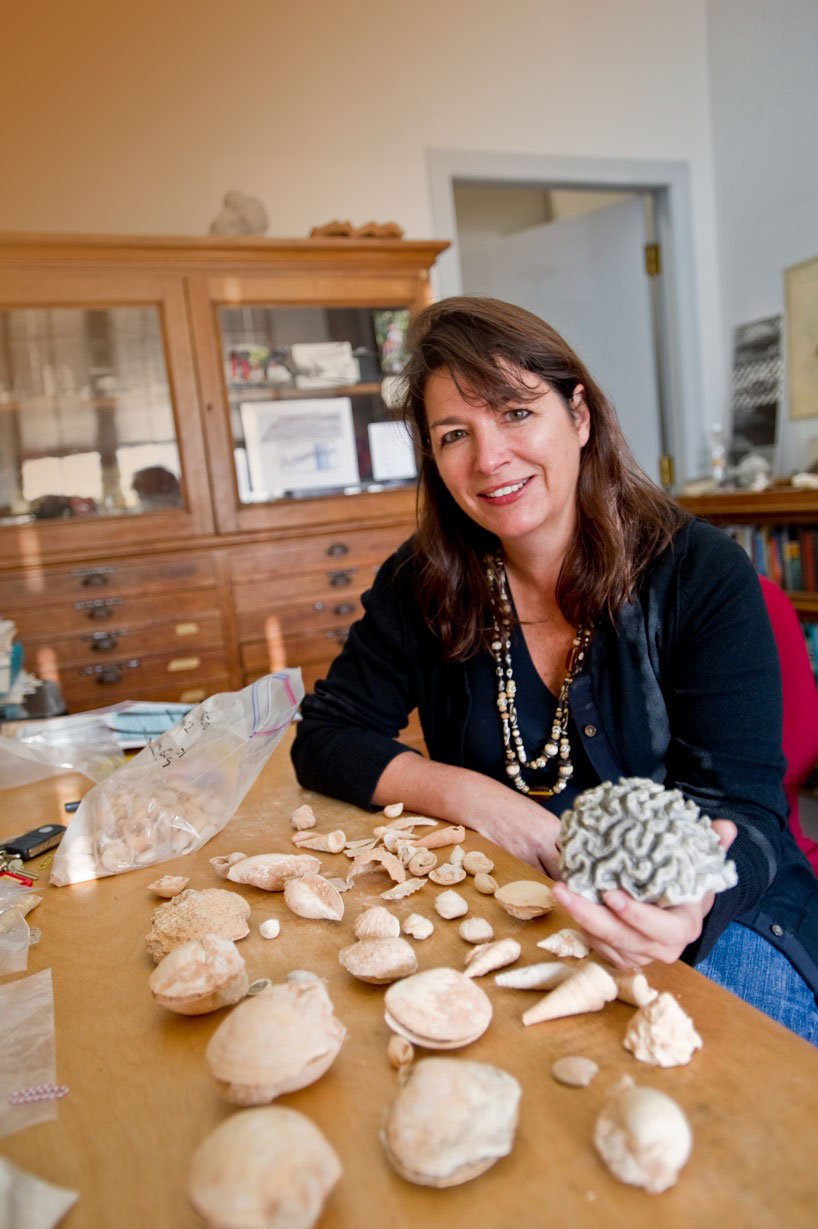
Message from the director
Maureen E. Raymo
Dear Friends,
As the world slowly emerges from the pandemic and countries begin lifting their travel restrictions, Lamont-Doherty Earth Observatory researchers have reignited their fieldwork, taking their instruments and inquiries to every continent and to the high seas. They helped us make this a year of important scientific discoveries, including shedding light on the current and foreseeable impacts of climate change, and expanding our knowledge about the inner workings of our planet. Our scientists revealed secrets hidden in major faults like the San Andreas, unlocked centuries of historical climate data in old timbers taken from buildings in New York City, and closed a chapter on Viking history. They also helped get us one step closer to predicting volcanic eruptions. These are just a few examples of the amazing research we highlight in this report.
Our basic research is also leading to the solutions the world needs to cope with the escalating climate crisis. Perhaps the most visible evidence of this real-world impact is the fact that three recent winners of Elon Musk’s X Prize were startups that focused on removing carbon dioxide from the atmosphere and that were underpinned by earlier research advances on the Lamont Campus.
I am also delighted to share that the National Science Foundation funded six new national Science and Technology Centers in 2021, two of which will be led or co-led by Lamont researchers. The goal of the Center for Learning the Earth with Artificial Intelligence and Physics, led by Pierre Gentine, Galen McKinley and Ryan Abernathey, is to improve our ability to predict future climate change by combining Earth observations with new computational methods that use machine learning and artificial intelligence. The approach will lead to better and more sophisticated climate models. In addition, Sonya Dyhrman, a marine microbiologist at Lamont, is co-leading NSF’s Center for Chemical Currencies of a Microbial Planet which will study the chemicals and chemical processes that underpin the carbon cycle in ocean ecosystems.
I am proud to lead the world’s premier climate and geoscience research institution at this critical moment, and believe that Lamont’s standing and reputation comes with a responsibility to be an inclusive institution, as well as one that leads efforts to diversify the geosciences. To that end, I established two new positions within Lamont’s leadership—the first is held by Dr. Vicki Ferrini, a Lamont Senior Research Scientist who is our new Associate Director for Diversity, Equity, Inclusion, and Anti-Bias (DEIA). Not only did Vicki accept this important role, she also brought in a $7 million dollar NSF grant called INSPIRE to advance the success of historically underrepresented communities in the geosciences. The second new position is the Assistant Director of DEIA and in April 2022 we welcomed Mackenzie Carr to that role. Previously, Mr. Carr worked at Hannam University in South Korea, where he was the Diversity, Equity, and Inclusion Campus Coordinator and Cultural Awareness Assistant Professor. He brings years of experience in advancing DEIA efforts with clients from diverse and multicultural settings in the workplace as well as within the community.
All this leaves me hopeful, yet there is much more to be done. Our planet is in crisis, and in order to make the best policies, the most equitable policies, the world’s leaders need to be informed by science of the highest caliber. Lamont’s mission has never been more essential. I hope you find the stories in this report as inspiring as I do, knowing that our scientists continue to innovate and push the boundaries of what we know about the past, present, and future of our planet Earth.
Sincerely,

Maureen E. Raymo
Director, Lamont-Doherty Earth Observatory
Co-Founding Dean, Columbia Climate School
G. Unger Vetlesen Professor of Earth and Climate Science






Message from the Director
Maureen E. Raymo
Dear Friends,
As the world slowly emerges from the pandemic and countries begin lifting their travel restrictions, Lamont-Doherty Earth Observatory researchers have reignited their fieldwork, taking their instruments and inquiries to every continent and to the high seas. They helped us make this a year of important scientific discoveries, including shedding light on the current and foreseeable impacts of climate change, and expanding our knowledge about the inner workings of our planet. Our scientists revealed secrets hidden in major faults like the San Andreas, unlocked centuries of historical climate data in old timbers taken from buildings in New York City, and closed a chapter on Viking history. They also helped get us one step closer to predicting volcanic eruptions. These are just a few examples of the amazing research we highlight in this report.
Our basic research is also leading to the solutions the world needs to cope with the escalating climate crisis. Perhaps the most visible evidence of this real-world impact is the fact that three recent winners of Elon Musk’s X Prize were startups that focused on removing carbon dioxide from the atmosphere and that were underpinned by earlier research advances on the Lamont Campus.
I am also delighted to share that the National Science Foundation funded six new national Science and Technology Centers in 2021, two of which will be led or co-led by Lamont researchers. The goal of the Center for Learning the Earth with Artificial Intelligence and Physics, led by Pierre Gentine, Galen McKinley and Ryan Abernathey, is to improve our ability to predict future climate change by combining Earth observations with new computational methods that use machine learning and artificial intelligence. The approach will lead to better and more sophisticated climate models. In addition, Sonya Dyhrman, a marine microbiologist at Lamont, is co-leading NSF’s Center for Chemical Currencies of a Microbial Planet which will study the chemicals and chemical processes that underpin the carbon cycle in ocean ecosystems.
I am proud to lead the world’s premier climate and geoscience research institution at this critical moment, and believe that Lamont’s standing and reputation comes with a responsibility to be an inclusive institution, as well as one that leads efforts to diversify the geosciences. To that end, I established two new positions within Lamont’s leadership—the first is held by Dr. Vicki Ferrini, a Lamont Senior Research Scientist who is our new Associate Director for Diversity, Equity, Inclusion, and Anti-Bias (DEIA). Not only did Vicki accept this important role, she also brought in a $7 million dollar NSF grant called INSPIRE to advance the success of historically underrepresented communities in the geosciences. The second new position is the Assistant Director of DEIA and in April 2022 we welcomed Mackenzie Carr to that role. Previously, Mr. Carr worked at Hannam University in South Korea, where he was the Diversity, Equity, and Inclusion Campus Coordinator and Cultural Awareness Assistant Professor. He brings years of experience in advancing DEIA efforts with clients from diverse and multicultural settings in the workplace as well as within the community.
All this leaves me hopeful, yet there is much more to be done. Our planet is in crisis, and in order to make the best policies, the most equitable policies, the world’s leaders need to be informed by science of the highest caliber. Lamont’s mission has never been more essential. I hope you find the stories in this report as inspiring as I do, knowing that our scientists continue to innovate and push the boundaries of what we know about the past, present, and future of our planet Earth.
Sincerely,
Maureen E. Raymo
Director, Lamont-Doherty Earth Observatory
Co-Founding Dean, Columbia Climate School
G. Unger Vetlesen Professor of Earth and Climate Science




Editors: Francesco Fiondella, Marian Mellin, Stacey Vassallo I Contributing Writers: Kevin Krajick, Sarah Fecht, Marie DeNoia Aronsohn I Design: Carmen Neal
Columbia Climate School Lamont-Doherty Earth Observatory Annual Report FY2022
© 2022 by The Trustees of Columbia University in the City of New York, Lamont-Doherty Earth Observatory. All rights reserved.
Editors: Francesco Fiondella, Marian Mellin, Stacey Vassallo I Contributing Writers: Kevin Krajick, Sarah Fecht, Marie DeNoia Aronsohn I Design: Carmen Neal
Columbia Climate School Lamont-Doherty Earth Observatory Annual Report FY2022
© 2022 by The Trustees of Columbia University in the City of New York, Lamont-Doherty Earth Observatory. All rights reserved.


